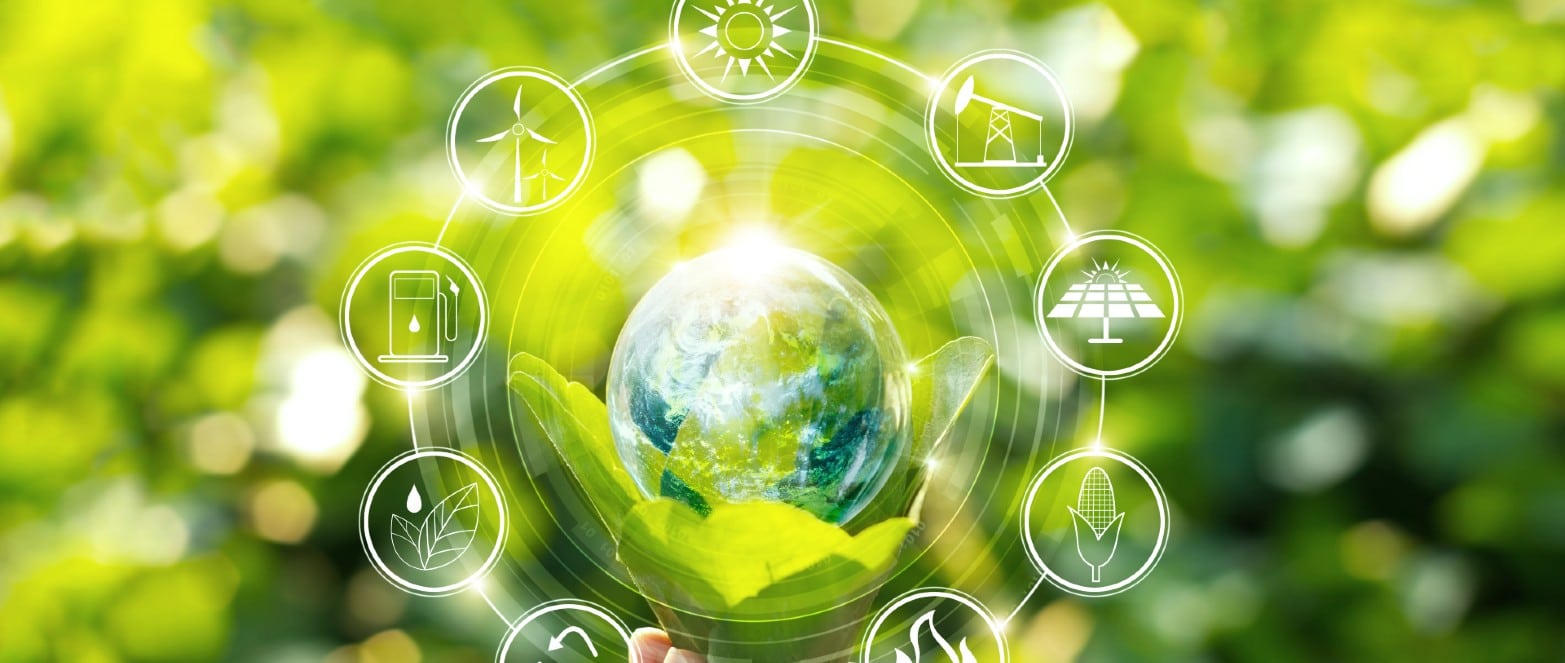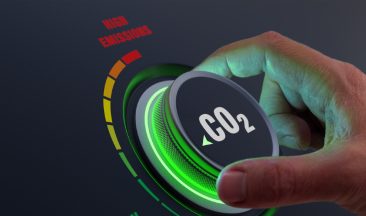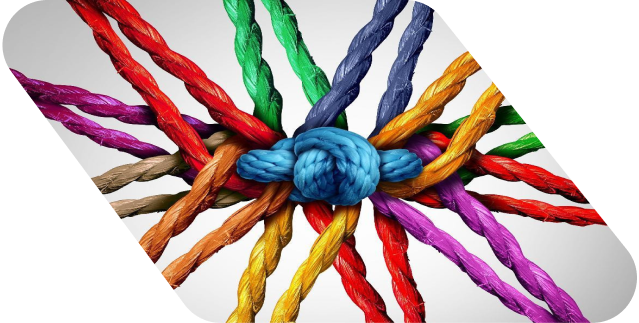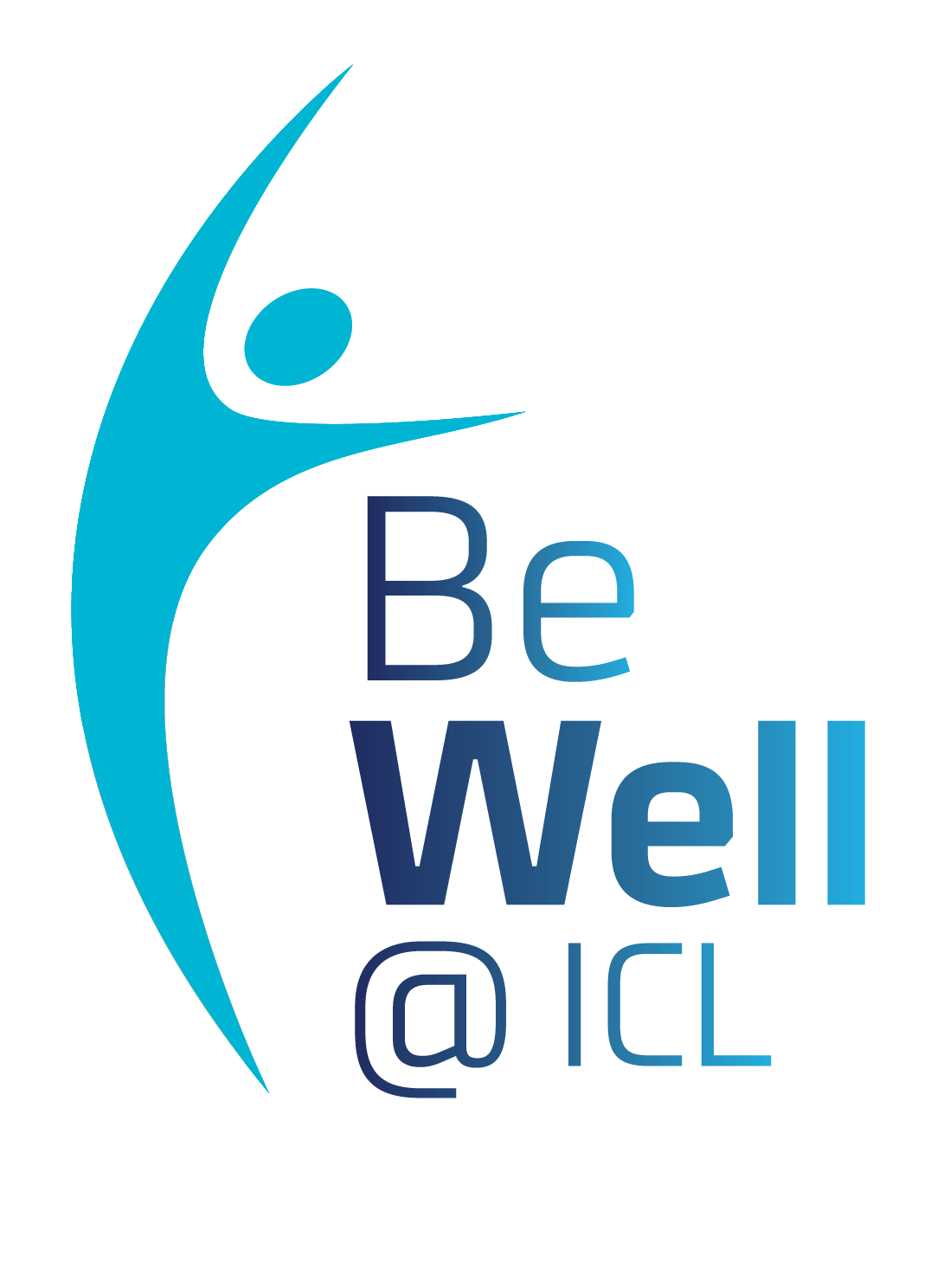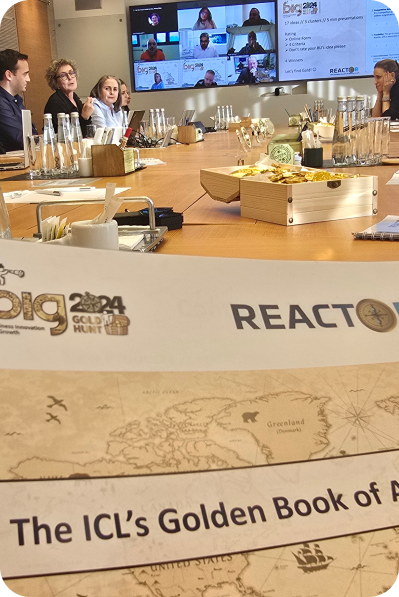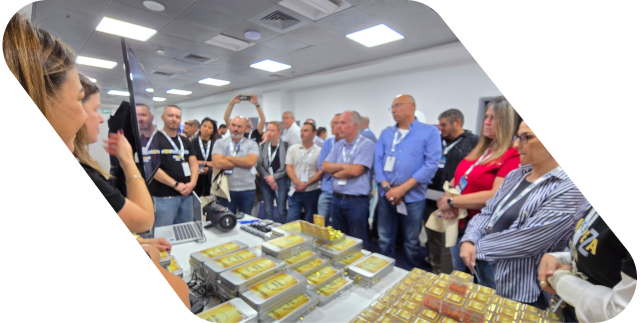The Importance of Sustainable Investment in 2023 and Beyond
Humanity is entering a pivotal period in its development. Rapid advances in AI, Big Data, and the Internet of Things are delivering game-changing technologies and enabling research and development into exciting new products.
The emerging technological revolution is also making a strategic shift towards sustainability. Sustainable innovation is at the forefront of ICL’s research and development programs and is a key driver in transforming the group’s own processes and daily operations across the world.
ICL was quick to see that sustainable innovation is not only the key to achieving an overall positive impact, but it is also now a prerequisite for achieving future growth. A demonstrable and quantifiable commitment to sustainable innovation is increasingly vital for securing investment, new contracts and partnerships, and even for recruiting high-caliber employees.
ICL is leading the way in sustainable innovation in industrial production, sustainable innovation in agriculture, and sustainable energy innovation. Our strategic vision is to create a positive impact at both local and global levels.
Impact- What does it mean?
The term ‘impact’ refers to the environmental and social influence that an organization generates through its actions, operations, and products. It can be positive or negative, intended or unintended.
Companies that embrace an impact strategy focus on specific global social and environmental challenges, which they commit to addressing through leveraging their assets, expertise, and resources. Impact-related criteria become part of how success is defined – so that processes, products, and activities now serve a dual goal – to generate both financial and social/environmental value.
To achieve these, companies create assessment, measurement, and monitoring tools to ensure progress and achievement of the set goals.
How is Impact Strategy different from Corporate Social responsibility or ESG
There’s a growing understanding and consensus at the boardroom level that companies need to transform how they operate. To remain viable, corporations increasingly need to demonstrate to governments, clients, investors, and the public that they are in sync with 21st-century expectations regarding ethical corporate behavior. CEOs and executives understand the need to demonstrate that they are delivering a positive impact on the environment and on society.
Despite this broader understanding, there’s still a lot of confusion about the specific criteria that combine to constitute an ethical, responsible, and forward-thinking business outlook. Related terms like impact strategy, corporate social responsibility, and environmental and social governance are often used interchangeably when they are actually distinct and separate concepts. It’s helpful to define these terms clearly.
Corporate social responsibility (CSR)
Companies that focus on the concept of corporate social responsibility are conscious of the influence they are having on the wider society. Companies typically report on their philanthropic initiatives, volunteering of employees, commitment taken to support social causes, and more.
In recent years CSR has grown, in some organizations, to address accountability issues at a very wide spectrum. However, CSR rarely relates to the core business and is not aimed at driving profitability or supporting business goals.
Environmental, Social, and Governance aspects (ESG)
ESG is a set of criteria that markets, stakeholders, and investors use to assess organizations on their operations. The focus is on how the organization acts in its internal processes and towards aspects it has control over (i.e. its factories, employees, or internal mechanisms). It evaluates on the following basis (not limited to):
– Environmental as it relates to the company’s contributions to climate action, its use of natural resources, its pollution, and waste management.
– Social as it relates to its relationships with employees, suppliers, customers, and its wider community and context.
– Governance as it relates to leadership, transparency, fairness and accountability, executive pay, shareholder rights, audits, and internal controls.
Impact
A company embracing an impact approach adds to these efforts a strategic approach to leverage its core competencies to generate positive impact at scale, and as part of its business growth plan and model.
Such companies adopt the approach which translates the world’s ‘problems’ into ‘opportunities’, which can generate business value and high profitability.
Why do companies embrace an Impact Strategy and Assessment?
There is growing awareness and understanding of the effect humanity’s actions have on the sustainability of our planet – and as a result, on our own. Leading companies are taking drastic measures to take responsibility to reduce any harmful effects they may have, as well as enhance their positive influence on both society and the planet.
This sustainability awareness is joined by global megatrends including:
Policy changes that require more sustainable sourcing, production, and distribution of goods.
Public and consumer preference of companies that are prioritizing positive impact in their actions.
Leading investors shifting their focus to allocate capital to companies that prioritize positive impact as an integral part of their business growth strategy.
At ICL, we understand that our positioning as a global leader enables us to have a meaningful effect, as well as to inspire other companies to follow. This is why we are committed to making an impact in the worlds of food, agriculture, and industrial products, and advancing humanity for a sustainable future.
“…Reporting on tonnes of carbon, the number of trees or diversity percentages does not reflect the real impact that our business does, our intentionality with the RD&I impact strategy is putting a price tag on the impacts of our R&D and External Innovation projects, and creating real transparency on our future impact,” says Hadar Sutovsky, ICL VP External Innovation.
ICL’s Research, Development, and Innovation Impact Assessment Initiative
What is the RD&I Impact Assessment Initiative?
Our Research, Development, and Innovation unit develops the future products, processes, and solutions the company will offer to our clients and stakeholders.
To ensure that ICL’s products will provide the greatest value for our customers sustainably, we have designed a set of strategic goals to guide us in all future developments.
ICL Group maintains dozens of ongoing enterprises and projects worldwide and covers a range of industries. We can divide our goals into three broad fields.
- Sustainable innovation in industrial production
- Sustainable innovation in agriculture
- Sustainable energy innovation
Our goals define the future we want to create, for our planet and future generations, through ICL products, solutions, and responsible manufacturing processes
Under each IMPACT goal, we defined a list of measurable targets which we aim to achieve. To ensure that these targets are promoted – we integrated an IMPACT assessment process that supports every step of development, with three purposes:
1. To constantly keep our minds open to the potential, positive and negative, impact that our development and innovation can generate. This helps us include impact criteria at every step.
2.To gather data on the projected positive impact, as well as potential risks which we will need to mitigate so that we have ongoing monitoring of the progress in addressing the impact goals we have defined.
3.To measure and monitor the impact contribution of each project, as well as the portfolio’s aggregated impact and progress. This will provide managers with a tool to make more informed, data-driven, impact-oriented decisions.
Dr. Anantha Desikan, ICL Chief of Innovation and Technology tells us “The RD&I impact assessment strategy and tool incorporates environmental considerations into the research and development process of ICL’s new products. By considering environmental impact at the stage gates of our process it will be possible to discover new products that will not only meet cost and performance objectives but also reduce pollution and waste, that’s what we mean by creating impactful solutions.”
RD&I’s impact goals and targets:
The impact compass and assessment tool were designed with the support of IMagine IMpact, an Israeli-based consulting firm specializing in impact strategy. Throughout the process, dozens of our scientists, teams, and heads of RD&I were highly engaged in both content formation and structure. This is to ensure that the impact goals and assessment will be successfully embedded and become useful tools in the day-to-day work of our teams.
Our priorities in the assessment design
When designing the assessment, we made sure to balance several priorities:
The assessment has to be incorporated into existing development and reporting processes so that it will be easily embedded into existing routines.
The RD&I is built from teams working on highly diverse projects – from food tech solutions, agricultural innovations, and additives to textiles and even supporting mechanisms serving autonomous vehicles. Our impact assessment must be both flexible and precise in its ability to capture the impact considerations of these different projects.
In addition to the complexity of an adaptable assessment to fit diverse projects and industries, it was also crucial for us to get very clear, actionable insights from the assessment – both at the project and portfolio levels. We wanted to make sure the assessment will not remain as a mere report but will turn the impact mindset into an integral part of all projects’ design.
Finally, we set out to design an assessment that, on one hand, will be easily taught to dozens of professionals from different backgrounds and cultures – but without compromising on the professionalism and depth of the assessment.
We’ve tackled this challenge by aligning ourselves with internationally accepted methodologies for impact assessment and ESG reporting but translated them into questions leading our project managers step by step.
Through close work with some of our teams, we have perfected both the training process and the assessment structure and supporting materials – to ensure that each project manager will have the ability to perform the assessment on any of their RD&I projects.
What does the impact assessment include?
The impact assessment is built as a series of questions, which develop in-depth and specificity as the project evolves. At the final stage of the project, the assessment is complete and is presented in a dashboard that summarizes its impact potential.
The dashboard enables everyone to easily see the full picture of what the project is about and how it is designed to generate specific, measurable positive impact under RD&I’s impact compass.
Impact assessment dashboard example:
The dashboard is divided into 3 pillars:
- An overview of the impact theme and thesis for change of the project – this part is aimed at clearly stating the intended effect of the project’s outcome, or which issue it is aiming to address. Additionally, this part also describes how the project’s design is such that it offers a better solution to an existing challenge.
The importance of this pillar is that it embeds a holistic thought process around each of the projects. This includes the consideration that an innovative solution that addresses one issue, might have a harmful effect on others – through this pillar of the assessment, our project managers consider a wide range of possible effects, and integrate this into the overall potential of the project for real, positive, change.
- Analysis of impact using industry-accepted methodologies:
- Defining the project’s alignment with the UN’s Sustainable Development Goals
Announced in 2015, the 17 Sustainable Development Goals guide governments and organizations around the world towards a more just and sustainable future for both the planet and people.
SDG goals and targets are intended to be achieved by 2030. The UN’s ESG goals have become a widely and internationally accepted framework for public, private, and social sector organizations, all of which are using them as a mutual language to demonstrate the positive contribution they aim to have as well as a basis for collaborative initiatives and methods to maximize the total positive impact to achieve the goals.
ICL’s core businesses are particularly relevant to the 2nd SDG of Zero Hunger and the 7th SDG of Clean and Affordable Energy. Our own commitment to sustainable innovation in agriculture and sustainable energy innovations is directly contributing to making these SDGs a reality by 2030.
As part of the assessment, we identify the specific goals that the project will directly influence for the better.
- ABC classification
The ‘ABC’ of impact provides a way to connect high-level intentions, characteristics, and strategy to determine how a project is aiming to drive positive impact.
A – Acts to Reduce Harm in order to mitigate negative social or environmental effects of the activity/product – iterating on a project that causes harm in order to make it cause less harm.
B – Benefits Stakeholders act to reduce harm and create or maintain a positive impact on a group of people or the condition of the natural environment.
C – Contributes to Solutions acts to reduce harm, create a benefit to stakeholders, and address a social or environmental challenge that is not caused by the organization. Often this is a proactive, innovative effort by the organization to widely improve a global challenge
Each project is categorized according to its level of impact contribution. - 5 Dimensions of Impact
An internationally accepted methodology to define and measure an organization’s impact across five dimensions:
What | Who | How Much | Contribution | Risk
Impact enterprises, investors, and fund managers apply the dimensions to better understand their impacts, as well as portfolio and individual investment performance.
Through the assessment, each project is deconstructed and rated on its performance on each of the impact dimensions. - Circular economy practices
Projects are assessed on their potential for promoting circular economy. For example, if new products make use of recycled materials or if innovative processes reduce waste or turn waste into valuable by-products.
Such aspects integrated into RD&I projects present a deep, meaningful integration of impact priorities into every aspect of sourcing, production, transportation, use, and end-of-life of products.
- Defining the project’s alignment with the UN’s Sustainable Development Goals
- Adherence and quantifiable contribution to RD&I specific goals
For each project, we define the ways in which it supports and contributes to RD&I’s specific goals and targets. We calculate the aggregated positive impact of the project, under different assumptions of sales and integration procedures, to report concrete estimations.
These estimations will be validated and updated as needed once the product or service is commercialized and begins its implementation in the market.
More on the subject:
The Green Sdom Initiative: Beating Climate Change with Green Energy in
Factories
BIG: ICL’s Revolutionary Approach to Internal Innovation Accelerators
Sustainability – Not Just Another Catchphrase!
ICL’s Commitment to Sustainable Innovation
ICL Group is built on innovation and adaptability. These qualities enabled the group’s exponential growth over the last three decades. We were among the first corporations to realize the need – and the benefits – of a circular economy and sustainable business practices.
Our demonstrable commitment to sustainable innovation in industrial production, energy, and agriculture has delivered considerable financial benefits and opened the door to sustained future growth. The Impact Framework Initiative sets out a clear roadmap with achievable milestones for all our new endeavors.
Our vision for the Impact Framework Initiative
The impact assessment, which will be performed for each of the RD&I unit’s innovative projects, is a first-of-its-kind practice embedded in a global corporation. ICL is committed to not only minimizing its negative effects on people and the planet but to ensuring it maximizes its positive impact on them in the long term.
We realize this is a long and sometimes challenging process. We believe ICL’s expertise, experience, market leadership, and innovative spirit are what is required to make such an approach a reality and to inspire others to follow.
